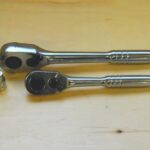Understanding how to accurately calculate boost pressure using OBD2 data from a GM vehicle requires a deep dive into the relationship between Manifold Absolute Pressure (MAP) and Barometric Pressure (BARO). This article explores the challenges of deriving boost from OBD2 PIDs, specifically focusing on the formula for calculating manifold atmospheric pressure in GM vehicles.
Many performance enthusiasts utilize OBD2 scanners to monitor boost. However, simply subtracting BARO from MAP often yields inaccurate results. As highlighted in the initial inquiry regarding a C7 Z06 Corvette, discrepancies arise between the calculated boost and the actual boost measured by a mechanical gauge. The issue stems from the OBD2 sensor readings not directly reflecting expected values. For instance, at zero boost (atmospheric pressure), the manifold pressure reading should ideally mirror the barometric pressure. However, this isn’t always the case.
The example provided illustrates this problem: with a BARO reading of 99 kPa and the engine off, the MAP sensor reports 64 kPa. This indicates a significant deviation from the expected atmospheric pressure. Further, at approximately 5 psi of boost, the MAP reading is 84 kPa, and at 10 psi, it reads 108 kPa. This non-linear relationship between MAP and actual boost suggests a need for a correction factor or formula.
One potential explanation for this discrepancy lies in the difference between standard resolution and high-resolution MAP sensor data (MAP vs. MAP_HR). The specific calculation or scaling applied to each PID might vary, leading to different pressure values. Understanding the mathematical relationship between these two PIDs is crucial for accurate boost calculation. Unfortunately, GM doesn’t publicly document these proprietary formulas.
The challenge lies in finding the “magical multiplier” or formula to correct the raw MAP readings. Subtracting the seemingly incorrect atmospheric pressure reading of 64 kPa from the MAP value at 5 psi of boost (84 kPa) results in a calculated boost of 2.9 psi, significantly lower than the actual 5 psi.
Determining the correct formula requires further investigation into the specific sensor used in the vehicle and potentially analyzing data logs from various operating conditions. Comparing OBD2 data with simultaneous readings from a reliable mechanical boost gauge can help establish a correlation and derive the necessary correction factor. Community forums dedicated to specific vehicle platforms often contain valuable insights from users who have tackled similar challenges. Reverse engineering the formula may be possible through rigorous testing and data analysis.
Ultimately, accurately calculating boost from GM OBD2 PIDs requires more than a simple subtraction of BARO from MAP. A deeper understanding of the sensor’s behavior, potential differences between standard and high-resolution data, and the application of a vehicle-specific correction factor are crucial for obtaining reliable boost pressure readings.
